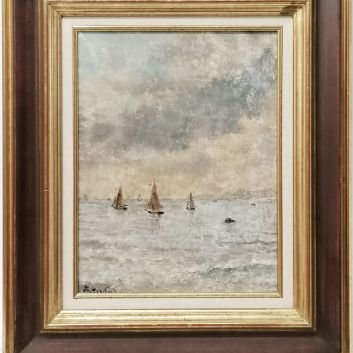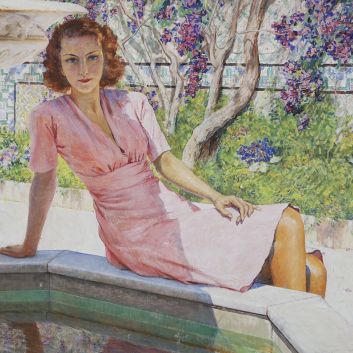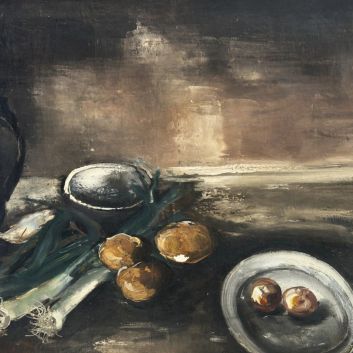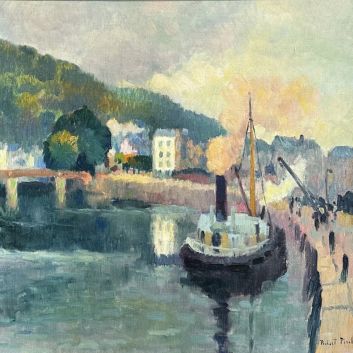Rating and value of paintings - landscapes and seascapes by Maurice de Vlaminck
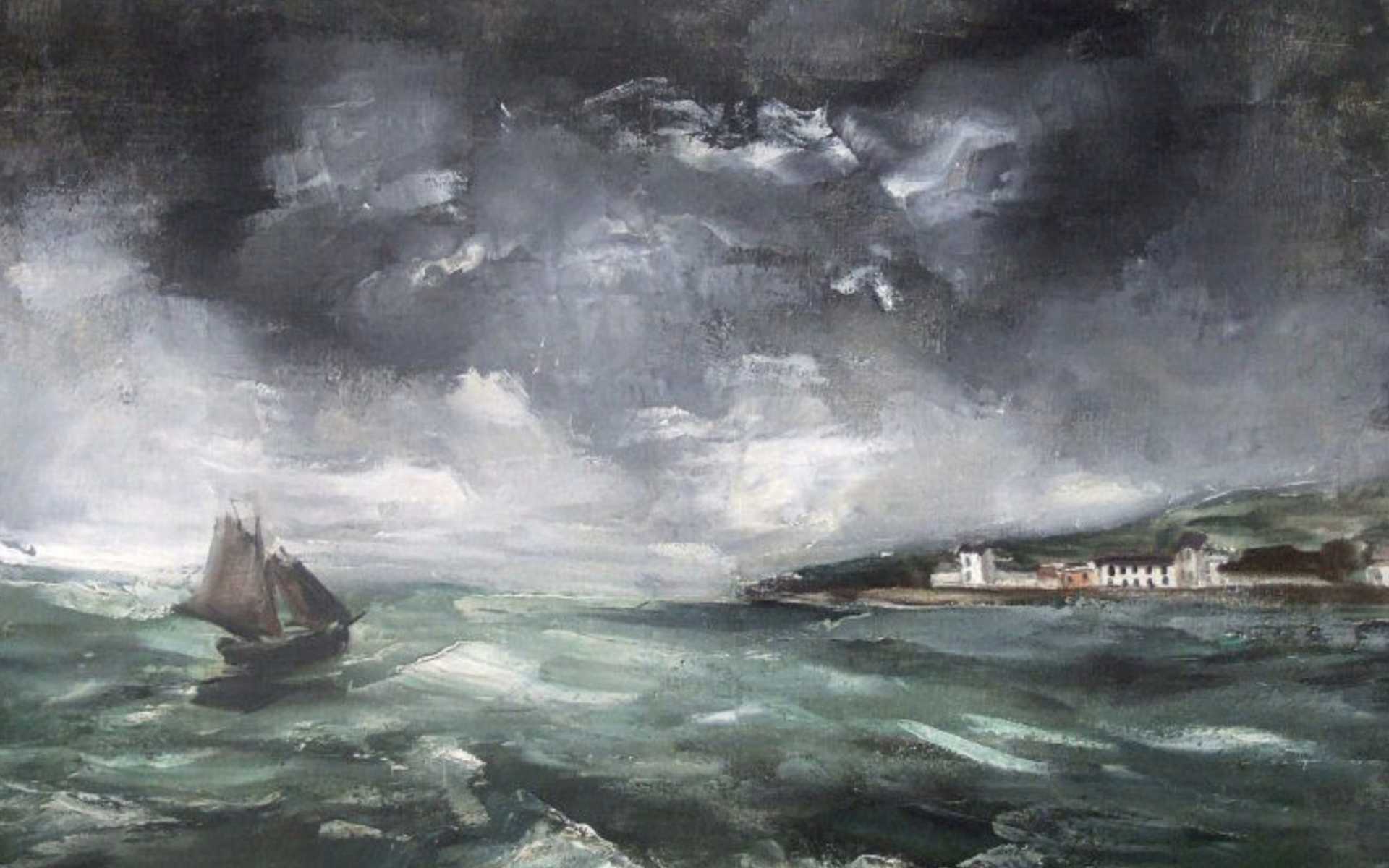
If you own a work by or about Maurice de Vlaminck and would like to know its value, our state-approved experts and auctioneers will be happy to offer you their expert appraisal services.
Indeed, Maurice de Vlaminck is a well-known artist to Auctie's and its experts.
Recently, several paintings by the Fauvist painter were put up for sale and were a great success - with the hammer price exceeding our high estimate.
These include marine and landscape paintings from the Fauvist period, which are currently very popular.
This is why we particularly encourage you to submit your Vlaminck painting for appraisal, and if you so wish, for sale.
Our specialists will carry out a free appraisal of your painting, and provide you with a precise estimate of its value on today's market. Then, if you wish to sell your painting, we will guide you towards the best possible means of obtaining the best possible price.
Rating and value of the artist Maurice de Vlaminck
Considered one of the pioneers of Fauvism, Maurice de Vlaminck quickly made his mark on 20th-century art. His legacy is made up of a variety of works, mainly oil on canvas, including landscapes and seascapes.
Today, the prices of his works are rising enormously under the auctioneers' gavels.
His landscapes are particularly sought-after, with prices on the art market ranging from €5 to €13,488,000 - a considerable range, but one that speaks volumes about the value that can be attributed to Vlaminck's paintings.
In 2018, a painting from the heart of the Fauvist period, 1906, entitled Paysage au bois mort, sold for €12,896,590 while it was estimated at €10,673,040 to €16,009,560.
Order of value from a simple work to the most prestigious
Technique used | Results |
|---|---|
Marine | From €13,380 to €9,451,800 |
Country landscape | From €990 to €12,896,590 |
Cityscape | From €8,070 to €13,488,000 |
Response in less than 24h
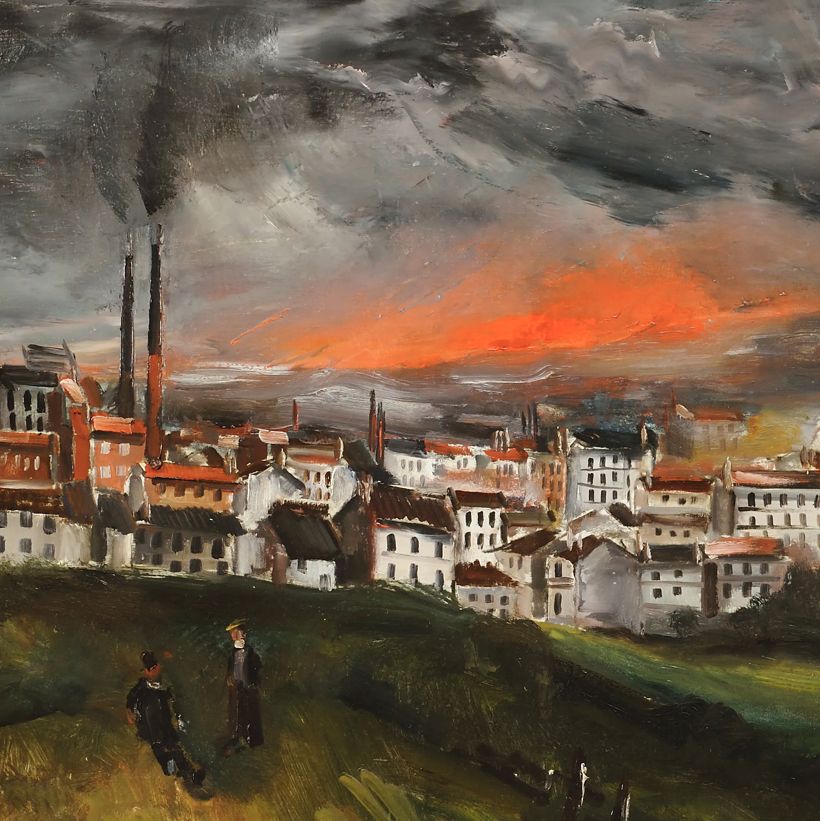
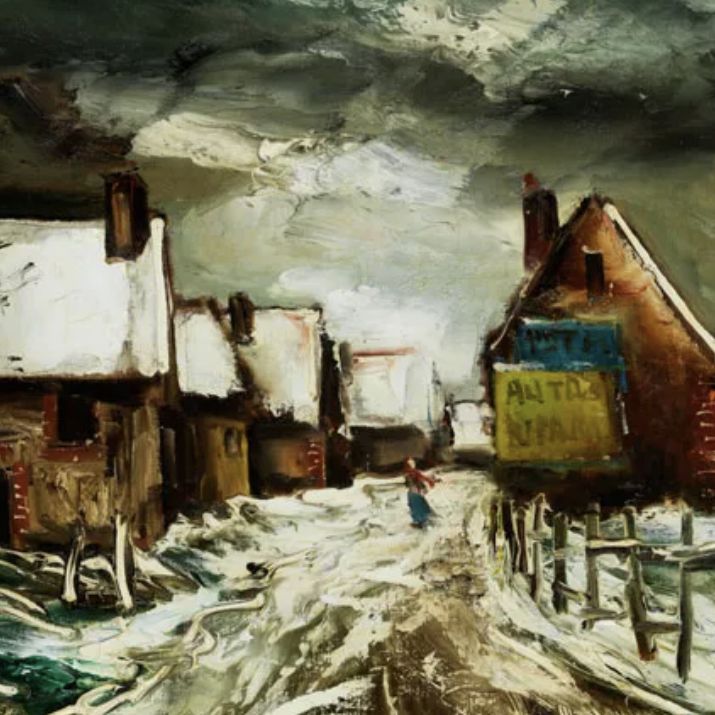
Aesthetic revolt in Vlaminck's landscapes
Maurice de Vlaminck established himself as one of the most fervent representatives of Fauvism, a revolutionary movement that exploded at the very beginning of the 20th century under the impetus of critic Louis Vauxcelles and the famous scandal in Room VII at the 1905 Salon d'Automne.
Vlaminck, with his unwavering vigor, embraces this aesthetic revolt, redefining painting's relationship to color and form.
He is best known for his landscapes and seascapes, in which he gives free rein to his artistic instincts, oscillating between a dark palette and the explosions of vivid tones characteristic of Fauvism.
Vlaminck's landscapes are distinguished by a great variety of styles, offering a range of sensations and emotions, sometimes deeply rooted in the observation of nature, sometimes freed from the constraints of realism.
Some of his works mark a more classical stage, where the depiction of natural elements, such as trees and waves, is executed with remarkable precision and sobriety.
In these canvases, the movement of branches in the wind, or waves crashing against rocks, are rendered with an almost naturalistic attention to detail. The light is soft, the hues subdued, and the atmospheres, though often dramatic, reflect a restrained use of color.
However, most of the works that made Vlaminck famous within the Fauvist movement took a completely different approach. In these paintings, forms are simplified, strokes become broader, almost savage, and colors explode.
Brilliant shades of blue, red and yellow collide, invading the canvas with a rare emotional intensity. Here, the artist no longer seeks to faithfully represent nature, but rather to translate its raw essence through bold, vivid color juxtapositions.
Realism fades away in favor of an expressive interpretation, where each brushstroke seems to capture an almost primitive energy.
This contrast between the two approaches-one sober and measured, the other effervescent and unrestrained-demonstrates Vlaminck's mastery and versatility. Although a fervent advocate of expressive color, he never abandoned a certain rigor in the composition of his landscapes.
The background often remains the same - a country lane, a river or a village under a heavy sky - but it's in the treatment of color and form that the artist breaks free from convention.
This stylistic evolution is perfectly in line with the Fauvist philosophy, which advocates freeing color from its descriptive functions, turning it into a pure vector of emotion.
In this way, Vlaminck transcends the boundaries of the traditional landscape. In his marine paintings, for example, waves are no longer simply masses of moving water, but become textured surfaces where color creates an almost abstract interplay of light and shadow.
The skies, often tormented, are rendered with broad strokes of deep blues and violent grays, giving these scenes a dramatic intensity that rivals the greatest masters of the genre.
It is in his most colorful works, however, that Vlaminck is most successful on the art market. These Fauvist paintings, in which color seems to burst from the canvas, are particularly prized by collectors and art lovers alike.
Their brilliance, their chromatic boldness, capture the very essence of the early 20th century avant-garde, a time when art was freeing itself from the shackles of realism to become a terrain of pure expression.
In short, Maurice de Vlaminck embodies the constant tension between tradition and modernity. Through his landscapes and seascapes, he offers us a renewed vision of nature, where artistic instinct and passion for color take precedence over a faithful representation of the world.
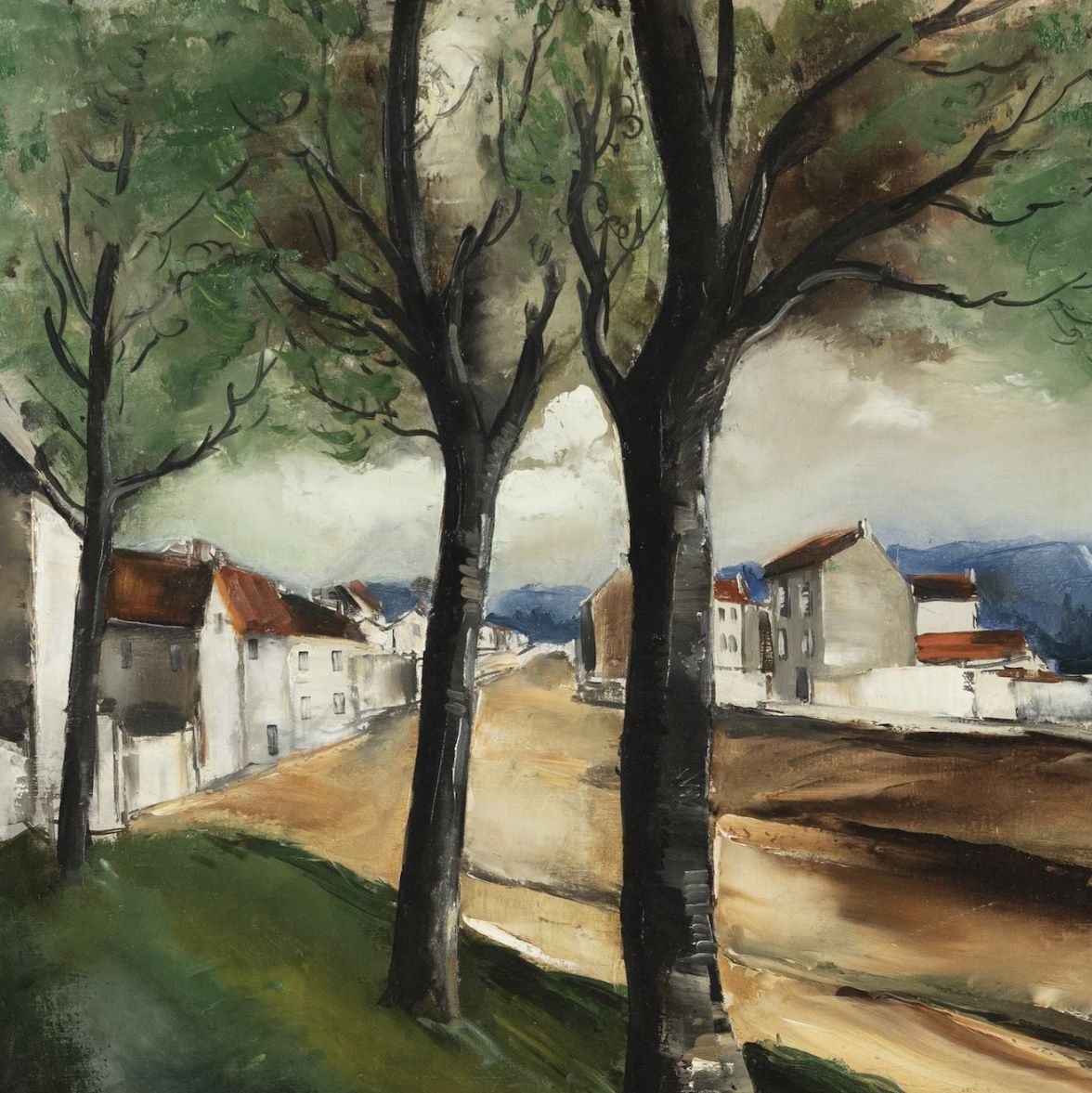
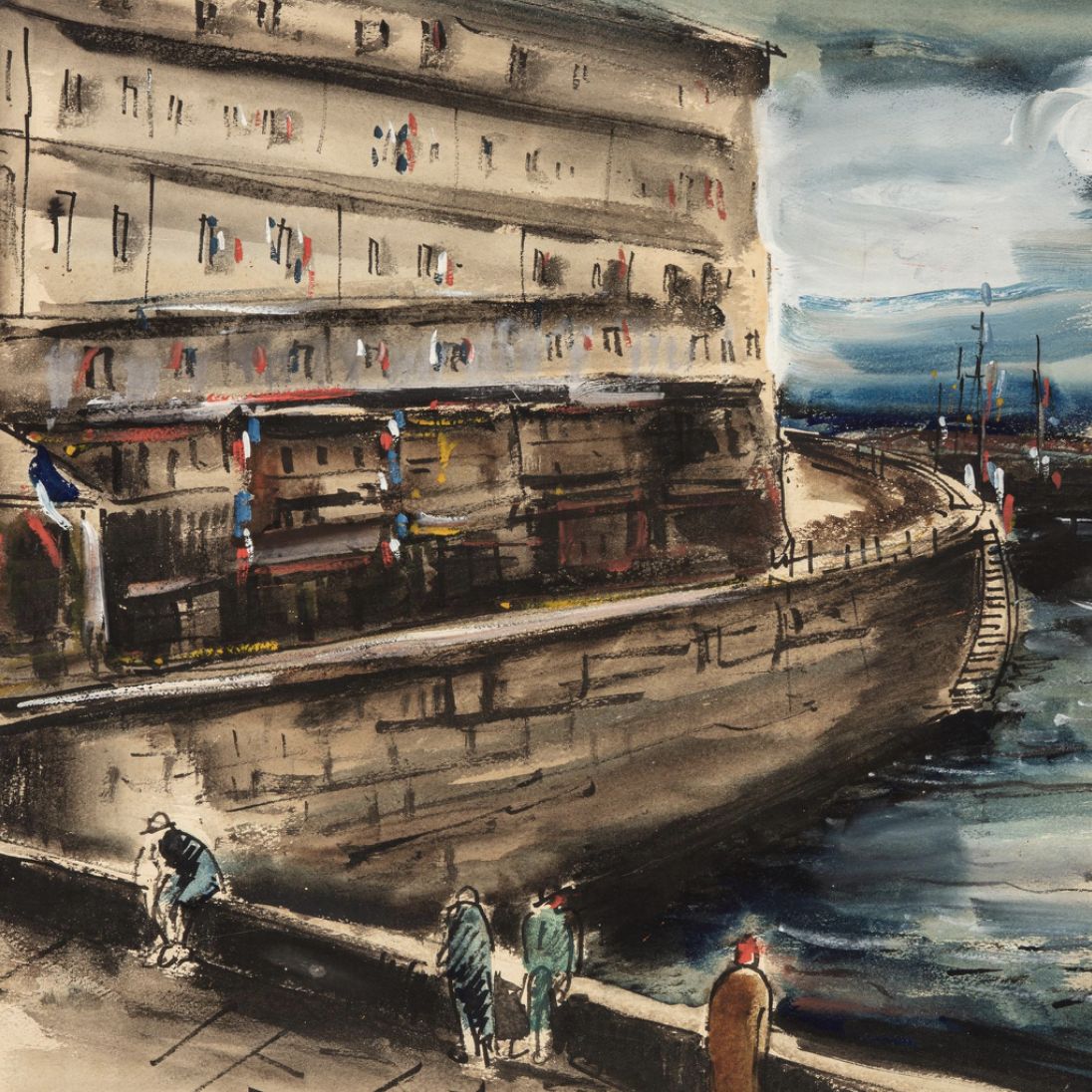
Maurice de Vlaminck and the Reinvention of Landscape: Color and Emotion
Maurice de Vlaminck, pseudonym of Maurice Edmond Devlaeminck (1876-1958), left his mark on the art world of the 20th century, particularly in the field of landscape painting.
Born in Paris, where he lived for the rest of his life, Vlaminck's artistic practice was protean.
Although his nudes and ceramic experiments are lesser-known facets of his work, it is in landscape painting that he truly excels, imposing a style in which color and emotion take precedence over fidelity to reality.
Through his landscapes and marineshe succeeded in conveying an intensely personal vision of nature, halfway between tradition and stylistic revolution.
Introduced to painting as a child by an artist neighbor, Vlaminck quickly developed a passion for art, but it took him a long time to make it his main profession. Before devoting himself fully to painting, he led a multi-faceted life, juggling music, cycling and painting.
It was thanks to his brother-in-law, an influential journalist, that he succeeded in bringing his work to the attention of the general public. His marriage to Suzanne de Verly, who accompanied him at the start of his career, also marked a period when he explored nature intensively, transcribing it with a vivacity and energy that were soon to become his signature.
Vlaminck's friendship with André Derain was crucial to the development of his art. Together, they explored new ways of representing the world, breaking with naturalism to plunge into a universe where color became autonomous.
Vlaminck's landscapes, in particular, break free from established conventions. Far from academic representations of nature, he allows himself an approach in which emotion dominates.
Sky, earth and trees are no longer decorative elements, but vectors of pure energy, which the artist translates with broad, brutal brushstrokes.
It was at the beginning of the 20th century, with the scandal of the Salon des Indépendants in 1914, that Vlaminck achieved international recognition. His Fauvist landscapes, often described as an "orgy of pure tones", pushed back the boundaries of pictorial representation.
Alongside Henri Matisse, Albert Marquet, Raoul Dufy andAndré Derain, he revolutionized painting with works in which colors burst forth, saturating pictorial space and giving natural scenes an emotional intensity never seen before.
The landscapes he painted at this time, particularly those inspired by the villages and countryside around Paris, feature brilliant skies, stylized trees and winding roads, all in an unbridled chromatic palette characteristic of Fauvism.
Vlaminck stands out for his ability to capture the landscape not as a faithful representation of nature, but as a pretext for expressing powerful emotions. In his most striking works, form is replaced by color.
Trees become vibrant masses, skies tumultuous flat tints of blue and gray, and country lanes become vast expanses where the brush runs free.
Each canvas is a window into the artist's mind, where the external landscape becomes a projection of his inner world.
One of Vlaminck's strengths lay in his ability to modulate his style according to the emotion he was trying to capture. While some of his works are almost dramatic in their sobriety, playing with dark hues and precisely sculpted forms, others are explosions of vivid, saturated color.
It's this duality, this tension between calm and restlessness, that makes his landscape work so fascinating. Each painting is an invitation to explore nature not with the eyes, but with the emotions.
The First World War, however, brought Vlaminck's career to a halt. Posted to a factory because of his family situation - father of three daughters - he was cut off from his usual landscapes.
But this interruption only strengthened his determination to take up his brush again after the war, with a new intensity. His post-war landscapes are darker, more introspective, marked by the horrors of the conflict.
Yet they retain the same vitality, the same boldness in the way he manipulates color to convey the depth of his feelings.
In short, Maurice de Vlaminck's landscapes reinvent the way nature is perceived and represented in painting. His canvases don't just describe a place; they capture the very essence of what nature inspires, making him one of the great masters of landscape in modern art.
Introduction to colorimetry - blue (2)
The pictorial heritage of Maurice de Vlaminck
Maurice de Vlaminck, a key figure in Fauvism, is an artist whose career has spanned the upheavals of the 20th century, testifying to its constant evolution.
In the vanguard of the artistic revolution initiated by the early Fauvists, Vlaminck pushed back the boundaries of painting, breaking academic codes to explore new ways of representing the world, particularly through color and emotion.
This process, which he shared with contemporaries such as Henri Matisse and André Derain, reflected a moment when art became a terrain for experimentation freed from the constraints of realism.
Vlaminck's work is rich and varied, testifying to an artistic sensibility in perpetual motion. Over the decades, his style evolved from a Fauvist period characterized by the "orgy of pure tones" to a more introspective phase, marked by the growing influence of Expressionism.
Towards the end of his career, his paintings became darker, the brushstrokes heavier, reflecting a sense of anguish at the events of the century.
This obsession with color also led him to write theoretical essays on art, in which he sought to explore the infinite potential of the chromatic palette and pass on his vision to future generations of artists.
Vlaminck's influence is not limited to his works on canvas, but also extends to his reflections on artistic practice. In his writings, he expresses radical thinking, advocating a liberation of art from aesthetic and moral conventions.
These essays, which had a lasting influence on the painters of his time, also helped spread his legacy. Like Kandinsky, Vlaminck was convinced that art must free itself from the limits of figurative representation to reach a higher level of spirituality and individual expression.
However, it's his early works, produced in the early 20th century, that have attracted the most attention from collectors and art historians.
These paintings, which embody Fauvism at its apogee, are characterized by a bold use of vivid colors, applied in broad flat tints, and by a certain magnification of line, giving his landscapes and still lifes an unprecedented visual power.
In these works, Vlaminck frees himself completely from visible reality to plunge into an instinctive representation, where emotion dominates the composition.
In short, Maurice de Vlaminck's legacy is that of a pioneering artist who helped transform twentieth-century art through his intense exploration of color and form.
His revolutionary approach continues to inspire contemporary painters, while his canvases, bursting with vitality, are as popular as ever on the art market.
Through his work and writings, he has left an indelible imprint that bears witness to an unceasing quest for artistic truth, in which color is both the means and the end.
Recognizing the artist's signature
Vlaminck's works are often signed, and his signature can vary from year to year. It can also be found on manuscripts. However, he was and is much copied, which is why it's important to have your work appraised.
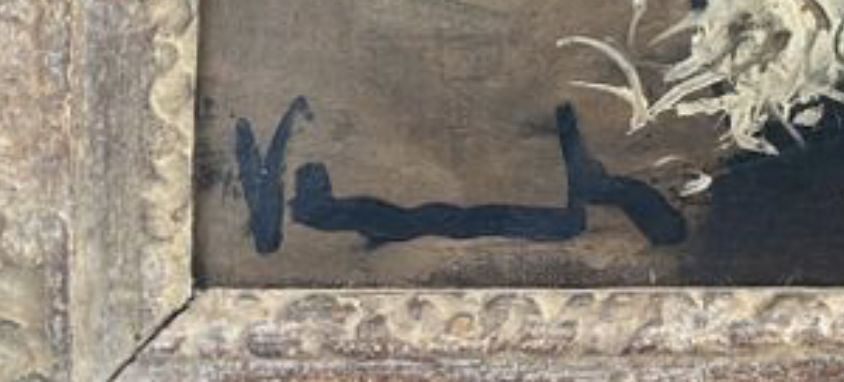
Knowing the value of a work
If you happen to own a painting by or after Maurice de Vlaminck, don't hesitate to ask for a free estimate using the form on our website.
A member of our team of experts and certified auctioneers will contact you promptly to provide you with an estimate of the market value of your work, as well as any relevant information about it.
If you're thinking of selling your work of art, our specialists will also be on hand to help you find alternatives for selling it at the best possible price, taking market trends into account.
Response in less than 24h
Related topics
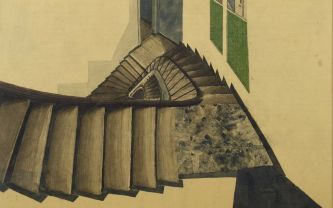
Rating and value of works, paintings, drawings by Sam Szafra...
Sam Szafran is a 20th-century painter and draughtsman. He has painted figurative works that are highly valued and quoted at auction.
Read more >
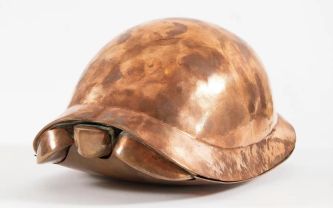
Rating and value of sculptures and bronzes by François-Xavier La...
François-Xavier Lalanne is a renowned and talented 20th-century sculptor whose works have skyrocketed in value at auction.
Read more >
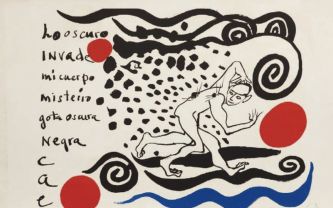
Rating and value of paintings, drawings and lithographs by Alexa...
Alexander Calder is a 20th-century American artist whose paintings and other works are highly prized at auction.
Read more >
Secure site, anonymity preserved
State-approved auctioneer and expert
Free, certified estimates
